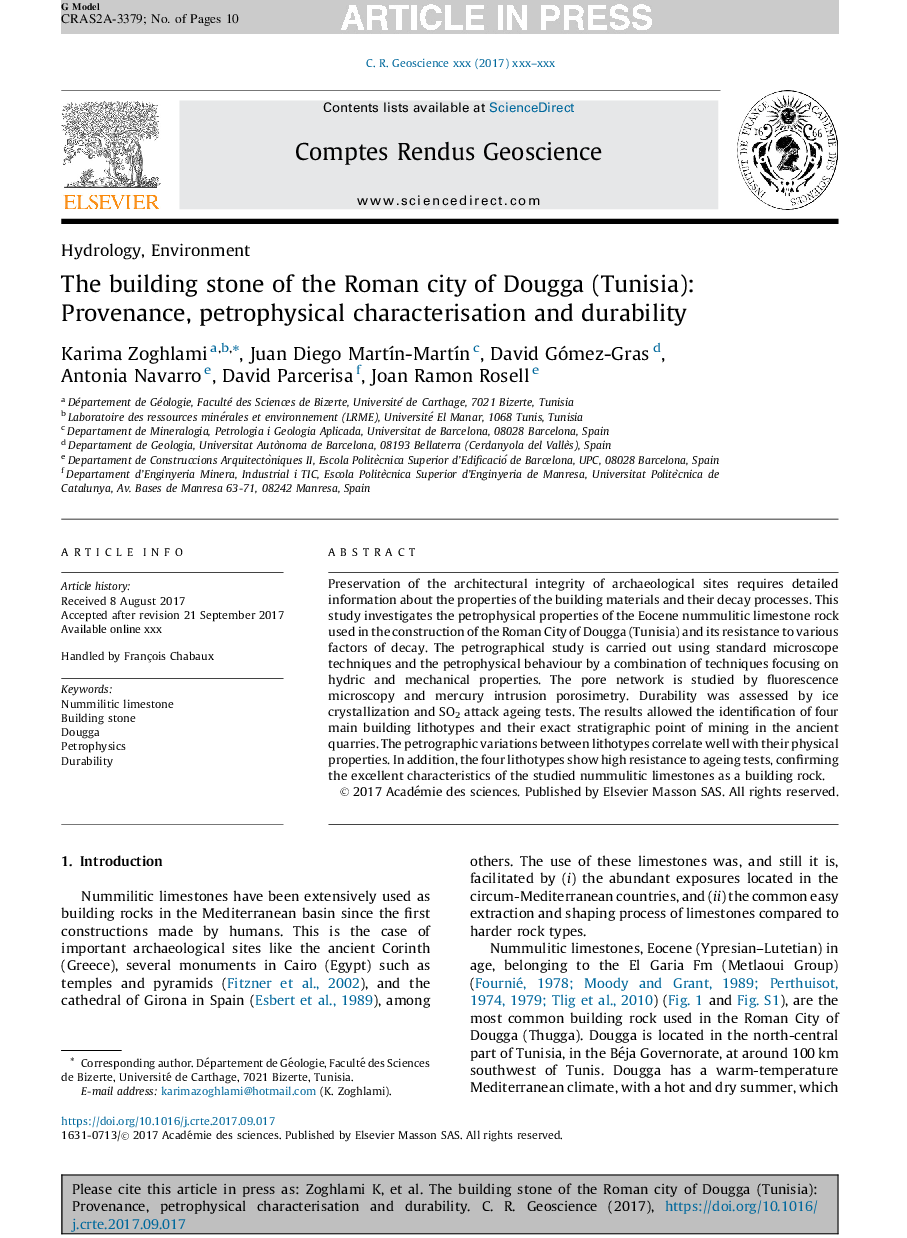| Article ID | Journal | Published Year | Pages | File Type |
|---|---|---|---|---|
| 8867373 | Comptes Rendus Geoscience | 2017 | 10 Pages |
Abstract
Preservation of the architectural integrity of archaeological sites requires detailed information about the properties of the building materials and their decay processes. This study investigates the petrophysical properties of the Eocene nummulitic limestone rock used in the construction of the Roman City of Dougga (Tunisia) and its resistance to various factors of decay. The petrographical study is carried out using standard microscope techniques and the petrophysical behaviour by a combination of techniques focusing on hydric and mechanical properties. The pore network is studied by fluorescence microscopy and mercury intrusion porosimetry. Durability was assessed by ice crystallization and SO2 attack ageing tests. The results allowed the identification of four main building lithotypes and their exact stratigraphic point of mining in the ancient quarries. The petrographic variations between lithotypes correlate well with their physical properties. In addition, the four lithotypes show high resistance to ageing tests, confirming the excellent characteristics of the studied nummulitic limestones as a building rock.
Keywords
Related Topics
Physical Sciences and Engineering
Earth and Planetary Sciences
Earth and Planetary Sciences (General)
Authors
Karima Zoghlami, Juan Diego MartÃn-MartÃn, David Gómez-Gras, Antonia Navarro, David Parcerisa, Joan Ramon Rosell,
